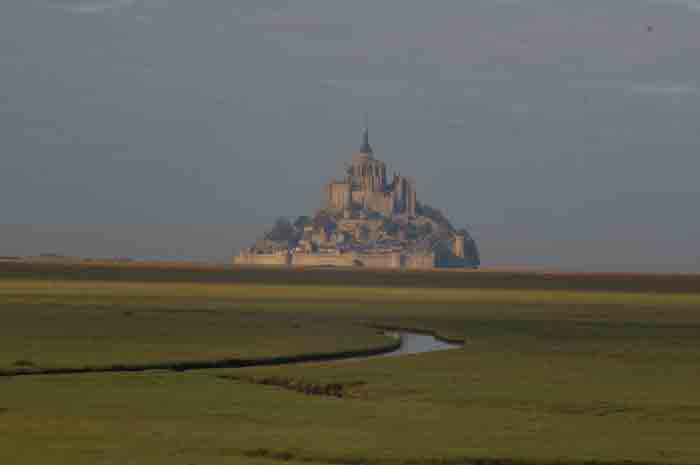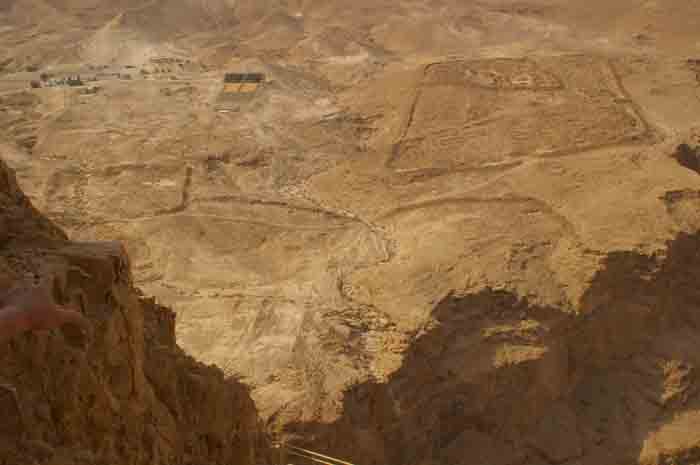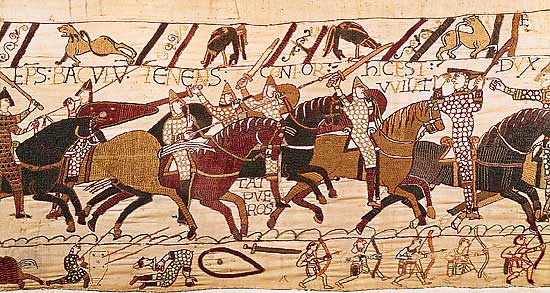Invasions
by wjw on November 11, 2014
 I’ve been back in New Mexico for several days, slowly recovering from jet lag and the fact I moved from sea level to 5000 feet in mere hours. The Williams Invasion of France and the Middle East is definitely over.
I’ve been back in New Mexico for several days, slowly recovering from jet lag and the fact I moved from sea level to 5000 feet in mere hours. The Williams Invasion of France and the Middle East is definitely over.
Kathy had to turn right around and fly to the East Coast, because her Aunt Dolores passed away a day before we left Paris, and now Kathy and her sister Alice are in Greenport dealing with that matter, which involves cleaning out the apartment, and that alone should take a month. If anyone would like a collection of 2000 vintage cookbooks, by all means let us know.
 The last days in Paris were low-key, in part because it rained most of the time. We met Jo Walton for dinner one night, and another night went to a traditional bistro with Karen and Suzanne, Kathy’s cousins. Karen is a musician and composer who works in film and tv, and Suzanne is a film editor who worked, among other projects, on Louis Malle’s Pretty Baby.
The last days in Paris were low-key, in part because it rained most of the time. We met Jo Walton for dinner one night, and another night went to a traditional bistro with Karen and Suzanne, Kathy’s cousins. Karen is a musician and composer who works in film and tv, and Suzanne is a film editor who worked, among other projects, on Louis Malle’s Pretty Baby.
When I fly home after a trip abroad, the whole experience seems to slip from my memory and become very dreamlike and distant, like a childhood memory. The more concrete memories always came back after I viewed the photos of the journey, which has resulted— particularly since the advent of digital— in my investing a lot more time in taking pictures, possibly more than is strictly rational. I took over 450 pictures in Israel, and 750 in France. Many of them are pictures of odd little details that may one day turn up in a story or novel.
If there’s a theme to the trip— beyond the amazing hospitality I encountered everywhere I went— it’s the motif of invasion. I always seemed to be standing on land that was disputed by one or more nations.
 I remember looking down at Roman siege camps from the Masada plateau, and wondering who exactly were the fanatics here, the 900 or so Sicarii (“knife-men”) holding out on top, or the 15,000 Roman soldiers who marched out in the 110-degree heat to besiege the place, and over a period of months built five siege camps, a circumvallating wall, and an enormous ramp reaching all the way to the ramparts.
I remember looking down at Roman siege camps from the Masada plateau, and wondering who exactly were the fanatics here, the 900 or so Sicarii (“knife-men”) holding out on top, or the 15,000 Roman soldiers who marched out in the 110-degree heat to besiege the place, and over a period of months built five siege camps, a circumvallating wall, and an enormous ramp reaching all the way to the ramparts.
I mentioned the Normandy invasion in another post, but I also remember driving from Caen to the Pegasus Bridge, and finding to my surprise that the country consisted of heavily wooded steep ridges, and not the flat empty country depicted in the history books. (It’s flat from Pegasus to Ouistreham, on the left of Sword Beach, but not farther inland.)
“Monty thought he could land his men and march them to Caen in a single day,” I remember thinking. “What was he smoking?”
(Montgomery, distracted perhaps by whatever it was he was smoking, also failed to tell his paratroopers of the presence in the area of the 21st Panzer Division, because he thought the news might adversely affect their morale. He also failed to increase their scant number of anti-tank weapons. Oops.
(And then he did the same damn thing a few months later in Market-Garden, deciding not to inform the British paras that the 2nd SS Panzer Corps was in their drop area. Double oops.)
If you’ve seen The Longest Day, you’ve seen Peter Lawford as the utterly fearless Lord Lovat, who led his commandos to the relief of Pegasus Bridge. He wore a white jumper, which must have made him the biggest target in the war, carried a Winchester lever-action over one arm, and marched his men in a proper parade across the bridge to the music of his personal piper. Stylish as hell, you must agree, but the film failed to mention that twelve of his commandos were killed by snipers on that brief march, mostly by shots to the head. (It was much more stylish to wear a beret than a helmet, but the cost of style was pretty high in this instance.) The exquisite “Shimi” Lovat was later parodied by Evelyn Waugh as the gross, plebeian Trimmer in the Sword of Honour trilogy.
I also viewed scenes from a reverse invasion, the 1066 conquest of England by Guillaume le Conquérant, as depicted in the Bayeux Tapestry. Which is a wonderful piece of work, something like 220 feet long and maybe 18 inches wide, including borders top and bottom that feature fabulous animals, scenes of medieval life, additional battle scenes, and sometimes satires on the main action. I don’t think there’s anything else like it in the world.
 The Tapestry is not actually a tapestry, but an embroidery, and the detail is exquisite. Not all the detail seems to be picked up by photographs: I made an extra trip along the length of the scroll just to admire the workmanship.
The Tapestry is not actually a tapestry, but an embroidery, and the detail is exquisite. Not all the detail seems to be picked up by photographs: I made an extra trip along the length of the scroll just to admire the workmanship.
It’s miraculous that the thing got made in the first place (nobody knows by who), and miraculous as well that it survived to the present day. (Hitler ordered it taken to the Louvre, and then evacuated to Berlin, but by the time the SS art thieves arrived in Paris, the Louvre was already in the hands of the Resistance. The local commander pointed to the Louvre and said, “It’s in there somewhere, you’re welcome to go get it if you want,” but the ubermenschen chose the better part of valor.)
The Tapestry’s currently got its own house in Bayeux, with a museum on the floor above dedicated to Guillaume and his invasion. The cathedral, where it was once stored, is an impressive structure, the lower half Norman-Romanesque, the upper bits Gothic. There are carvings that resemble the fantastic animals on the Tapestry.
(“As above, so Bayeux”. That’s my own little nifty. You may quote me.)
Bits of the trip will be turning up in my fiction for more or less ever, the whole experience kept alive by the absurd number of pictures I took. Except that I haven’t yet found the time to write the stories inspired by last year’s trips, so it may be a while.
I declare the invasion a success, and I hereby run up the flag and amble on home. Carry on.
 I’ve been back in New Mexico for several days, slowly recovering from jet lag and the fact I moved from sea level to 5000 feet in mere hours. The Williams Invasion of France and the Middle East is definitely over.
I’ve been back in New Mexico for several days, slowly recovering from jet lag and the fact I moved from sea level to 5000 feet in mere hours. The Williams Invasion of France and the Middle East is definitely over. The last days in Paris were low-key, in part because it rained most of the time. We met Jo Walton for dinner one night, and another night went to a traditional bistro with Karen and Suzanne, Kathy’s cousins. Karen is a musician and composer who works in film and tv, and Suzanne is a film editor who worked, among other projects, on Louis Malle’s Pretty Baby.
The last days in Paris were low-key, in part because it rained most of the time. We met Jo Walton for dinner one night, and another night went to a traditional bistro with Karen and Suzanne, Kathy’s cousins. Karen is a musician and composer who works in film and tv, and Suzanne is a film editor who worked, among other projects, on Louis Malle’s Pretty Baby. I remember looking down at Roman siege camps from the Masada plateau, and wondering who exactly were the fanatics here, the 900 or so Sicarii (“knife-men”) holding out on top, or the 15,000 Roman soldiers who marched out in the 110-degree heat to besiege the place, and over a period of months built five siege camps, a circumvallating wall, and an enormous ramp reaching all the way to the ramparts.
I remember looking down at Roman siege camps from the Masada plateau, and wondering who exactly were the fanatics here, the 900 or so Sicarii (“knife-men”) holding out on top, or the 15,000 Roman soldiers who marched out in the 110-degree heat to besiege the place, and over a period of months built five siege camps, a circumvallating wall, and an enormous ramp reaching all the way to the ramparts. The Tapestry is not actually a tapestry, but an embroidery, and the detail is exquisite. Not all the detail seems to be picked up by photographs: I made an extra trip along the length of the scroll just to admire the workmanship.
The Tapestry is not actually a tapestry, but an embroidery, and the detail is exquisite. Not all the detail seems to be picked up by photographs: I made an extra trip along the length of the scroll just to admire the workmanship.
It was an amazing trip!
Nice pic of Mont St Michel – captures the mythical feel of the place.
There’s another striking romanesque-gothic hybrid at Le Mans – when they did the upgrade they rotated the floor plan 90 degrees, repurposing the original romanesque nave as the transept of the gothic cathedral. The stained glass in the semi-circular wall behind the altar is also absolutely *stunning*. It’s over twenty years since I went there and it’s still fresh in my memory.
Regards
Luke
When I saw the tapestry, I had just been reading The Sagas of Icelanders. Looking at the tapestry as “William’s Saga” everything made sense. William ransoming (buying, basically) Harold and making him his captive best buddy and comrade in arms is classic Viking political/psychological warfare.
Comments on this entry are closed.